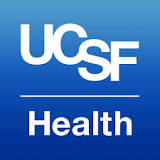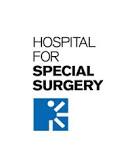Cost Effectiveness of Nonoperative Management for Adult Spinal Deformity
| Status: | Enrolling by invitation |
|---|---|
| Conditions: | Orthopedic, Women's Studies |
| Therapuetic Areas: | Orthopedics / Podiatry, Reproductive |
| Healthy: | No |
| Age Range: | 40 - 75 |
| Updated: | 4/21/2016 |
| Start Date: | June 2015 |
| End Date: | April 2017 |
Cost Effectiveness of Nonoperative Management for Adult Spinal Deformity Associated With Low Grade Scoliosis: A Prospective Pilot Study to Evaluate Disease Burden and Longitudinal Study Feasibility
Quantify the efficacy and cost of nonoperative treatment modalities used for adult spinal
deformity.
deformity.
1. Identify disease burden associated with adult spinal deformity (ASD) using quality
adjusted life year (QALY) analysis.
2. Identify disease burden of specific demographic and radiographic features associated
with ASD.
3. Compare disease burden of ASD to other musculoskeletal and non-musculoskeletal
diseases.
4. Identify efficacy of specific nonoperative treatment modalities to treat ASD and
identify specific clinical and radiographic features of ASD responsive to nonoperative
treatment modalities.
5. Compare QALY and ICER values for different ASD nonoperative treatment modalities to
previously established QALY and ICER for values for operative and nonoperative
treatment modalities for degenerative hip and knee disease, coronary artery disease,
insulin dependent diabetes, and hypertension.
6. Evaluate the cost and work hours associated with data collection and minimum 85%
patient follow up.
7. Evaluate patient characteristics associated with poor patient compliance for study
follow up including demographic, radiographic and HRQOL values and for reasons for
cross-over to operative treatment for ASD.
8. Establish standardized data collection methodology for economic based outcome studies
based upon patient demographics and HRQOL values.
adjusted life year (QALY) analysis.
2. Identify disease burden of specific demographic and radiographic features associated
with ASD.
3. Compare disease burden of ASD to other musculoskeletal and non-musculoskeletal
diseases.
4. Identify efficacy of specific nonoperative treatment modalities to treat ASD and
identify specific clinical and radiographic features of ASD responsive to nonoperative
treatment modalities.
5. Compare QALY and ICER values for different ASD nonoperative treatment modalities to
previously established QALY and ICER for values for operative and nonoperative
treatment modalities for degenerative hip and knee disease, coronary artery disease,
insulin dependent diabetes, and hypertension.
6. Evaluate the cost and work hours associated with data collection and minimum 85%
patient follow up.
7. Evaluate patient characteristics associated with poor patient compliance for study
follow up including demographic, radiographic and HRQOL values and for reasons for
cross-over to operative treatment for ASD.
8. Establish standardized data collection methodology for economic based outcome studies
based upon patient demographics and HRQOL values.
Inclusion Criteria:
1. Age 40-75 years of age at the time of enrollment.
2. ODI ≥30
3. Adult degenerative or idiopathic lumbar scoliosis 10-40° as measured by the Cobb
angle technique
4. Sagittal plane deformity by SRS Schwab classification with at least one modifier ++
or two modifiers + and associated coronal cobb of at least 10 degrees
Exclusion Criteria:
1. Adult degenerative or idiopathic scoliosis with a curvature of the spine measuring
<10 degrees or >40 degrees
2. Diagnosis of scoliosis other than degenerative or idiopathic (i.e. neuromuscular,
congenital, etc.)
3. Cardiopulmonary disease or comorbidities that preclude surgical intervention
4. Patient not deemed surgical candidate by treating surgeon
5. Patient unwilling to commit to monthly phone interviews or completion of necessary
questionnaires or inability to return for defined follow up time points. Patients
unwilling to comply with study protocol will not be offered enrollment into the
study, regardless of meeting inclusion criteria.
We found this trial at
10
sites
Click here to add this to my saved trials
University of Virginia The University of Virginia is distinctive among institutions of higher education. Founded...
Click here to add this to my saved trials
Click here to add this to my saved trials
University of Kansas Medical Center The University of Kansas Medical Center serves Kansas through excellence...
Click here to add this to my saved trials
Click here to add this to my saved trials
Hospital for Special Surgery Founded in 1863, Hospital for Special Surgery is the nation
Click here to add this to my saved trials
Click here to add this to my saved trials
University of California-Davis As we begin our second century, UC Davis is poised to become...
Click here to add this to my saved trials
505 Parnassus Ave
San Francisco, California 94143
San Francisco, California 94143
(415) 476-1000

University of California, San Francisco Medical Center UCSF Medical Center is recognized throughout the world...
Click here to add this to my saved trials
Click here to add this to my saved trials



